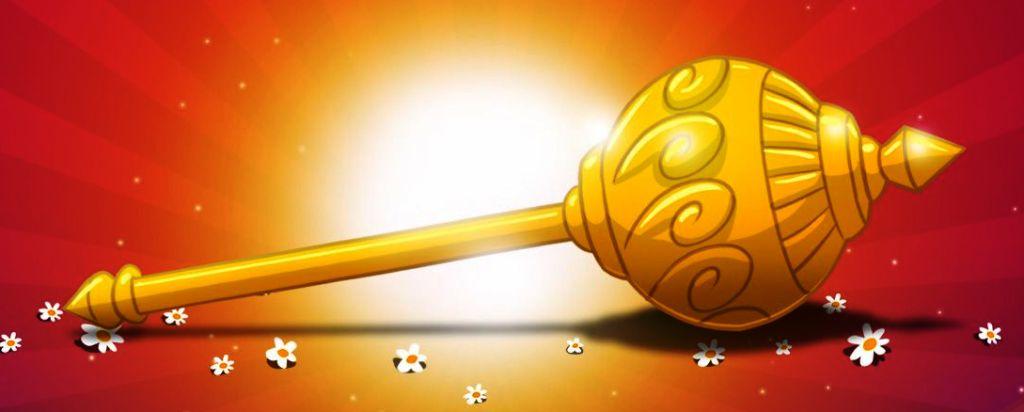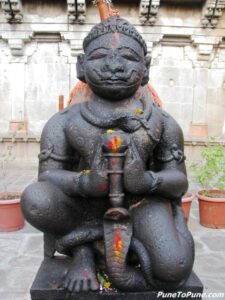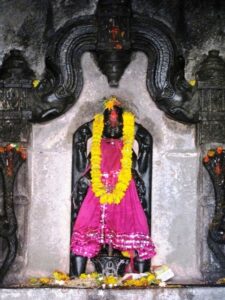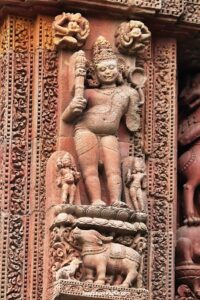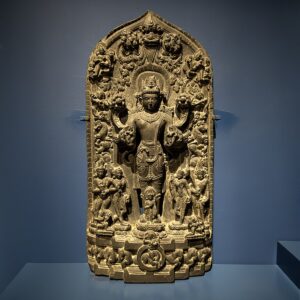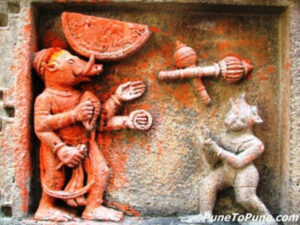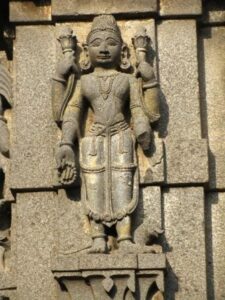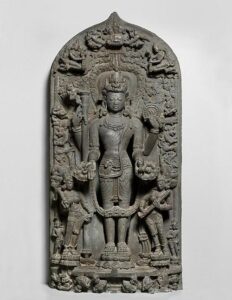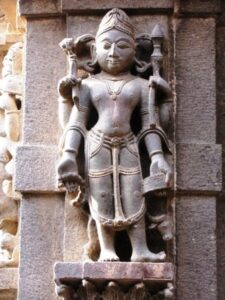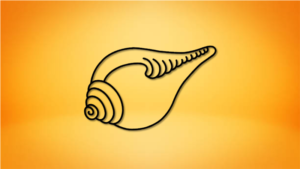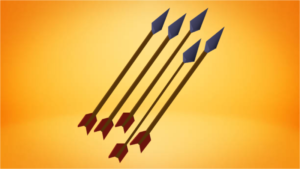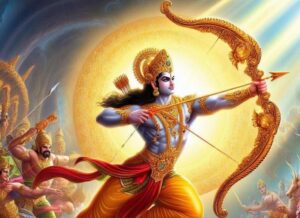Gada is an ordinary Indian club. It is held in the hand by the images with all five fingers. In some cases, however, one of the hands of the image is placed upon the top of the gada which rests on the floor.

In the earlier sculptures, its representation is always plain; it has a tapering top and a stout bottom. In comparatively later instances, it is more or less elaborately ornamented. It is a weapon meant to strike the enemy at close quarters and does not therefore leave the hand of its owner.
Primarily a symbol of Lord Vishnu but also shared among many of the deities, especially with Lord Hanuman.
Gada is mentioned in almost all the scriptures. In Mahabharata, Bhima and Duryodhana were the best in Gada–Yudh (fight with mess).
Some famous Gadas mentioned in Hinduism:
- Ekasha Gada – The mace of Lord Shiva. A blow from the weapon is the equivalent of being hit by a million elephants.
- Gada – the main weapon of the Hindu monkey god Hanuman, son of Añjanā.
- Kaumodaki – Kaumodaki is the gada (mace) of the Hindu god Vishnu
- Mace of Bhima – It was presented by Mayasura. It was used by Danavas King Vrishaparva.
- Modaki Mace – The Beater Mace
- Shibika (a club) – The weapon of Kubera, the god of wealth.
- Shikhari Mace – The tower of Protection mace
Spiritual Meaning:
The mace is a symbol of sovereignty and the Cosmic Order. It also symbolizes Karma the law of cause and effect.

